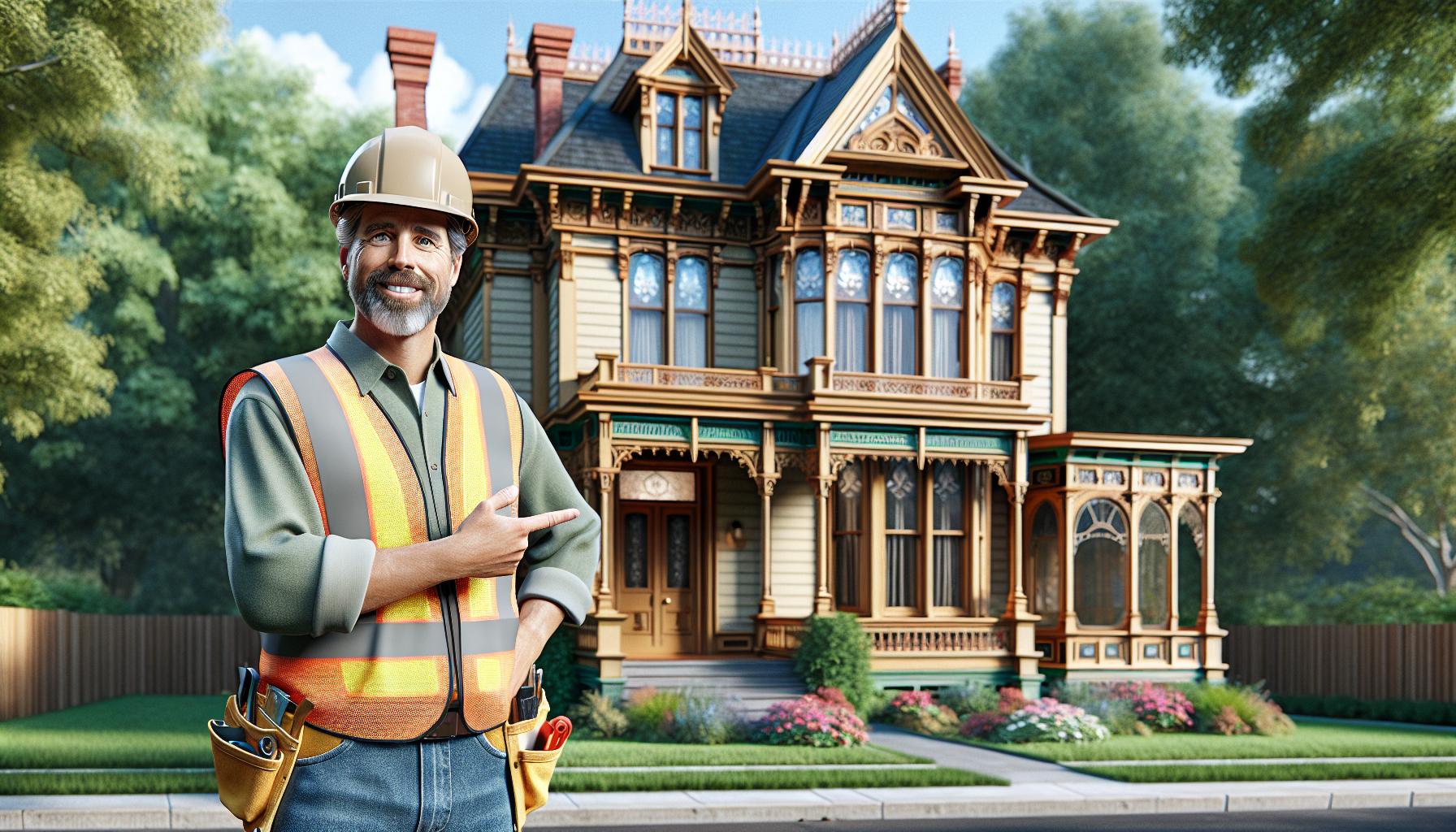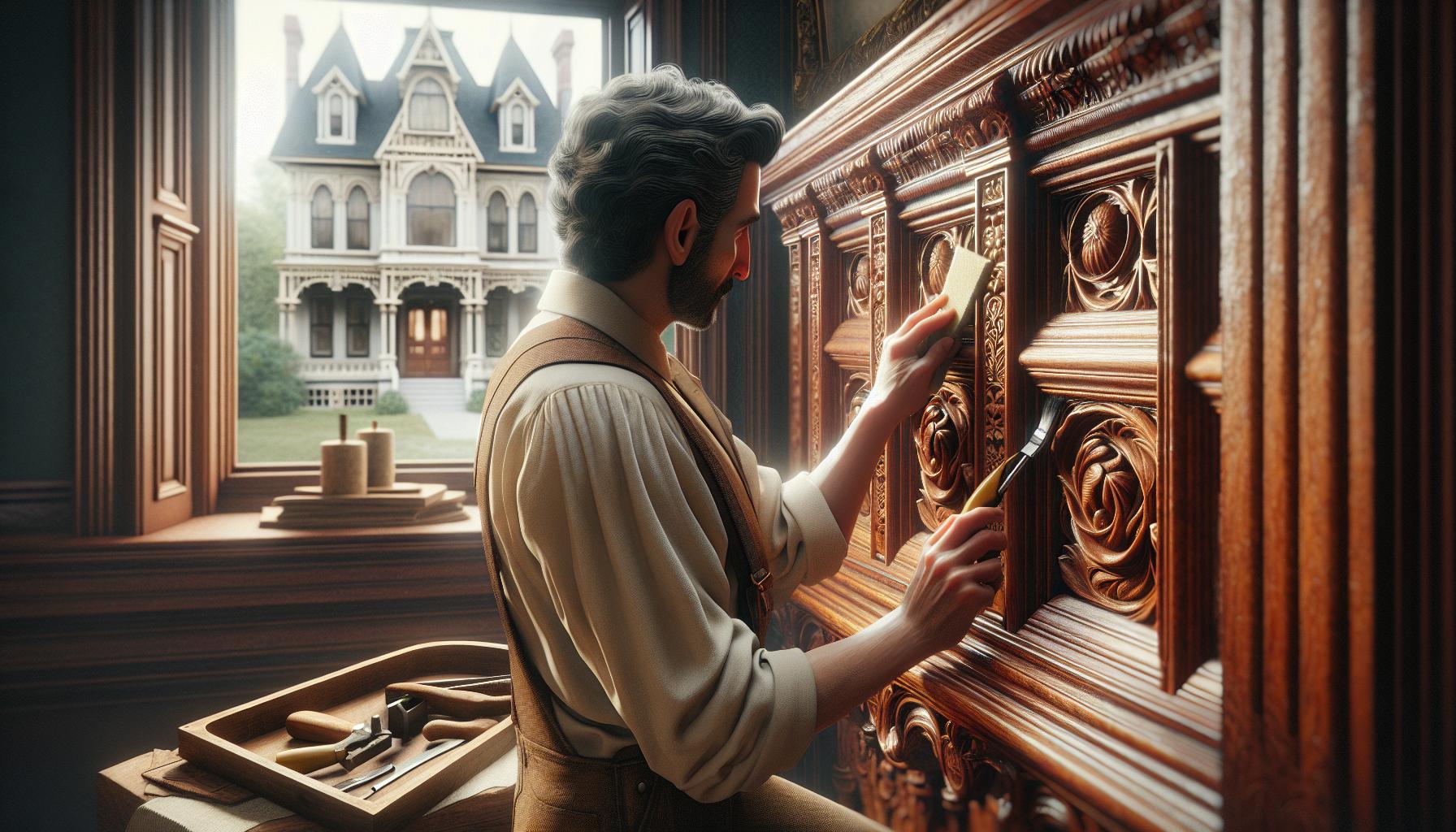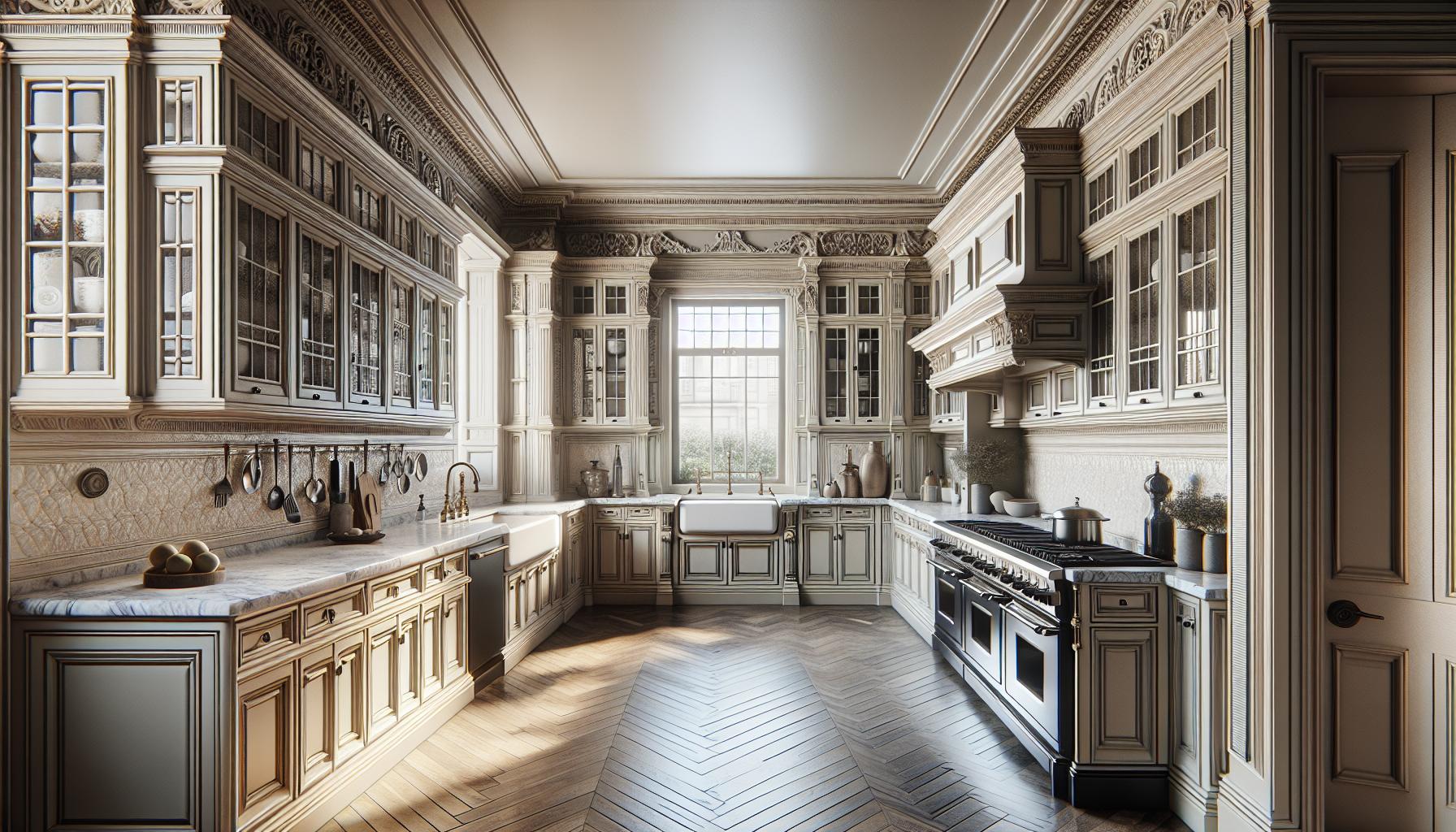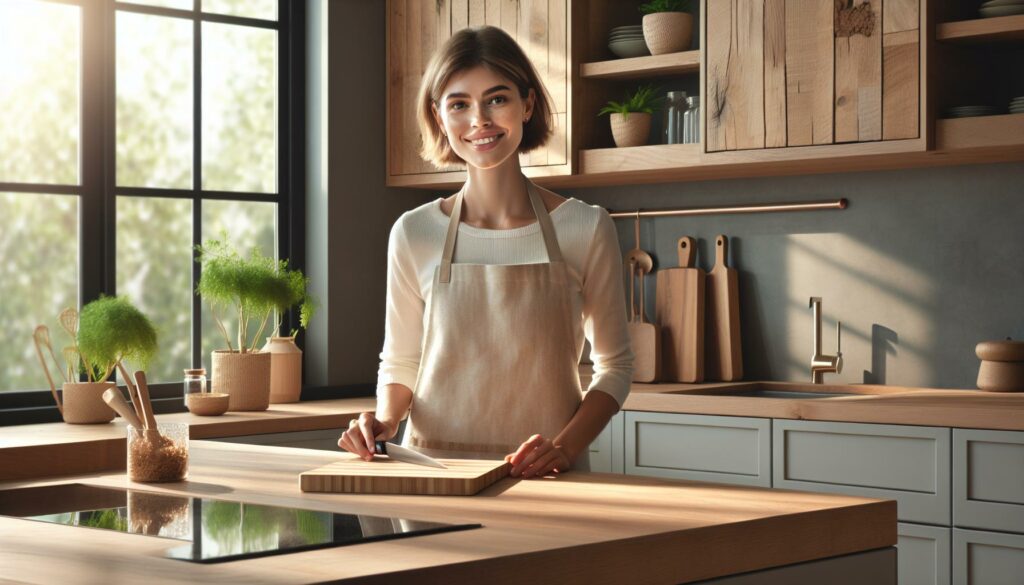Renovating a Victorian home is like stepping back in time while crafting a future masterpiece. These architectural gems, with their ornate details and historical charm, offer a unique canvas for creativity and restoration. When I first embarked on my Victorian renovation journey, I was captivated by the intricate woodwork, stained glass windows, and towering ceilings that whispered stories of a bygone era.
However, breathing new life into these old beauties isn’t just about preserving history; it’s about blending the past with modern comforts. Balancing authenticity with contemporary needs can be challenging but incredibly rewarding. Whether you’re updating the plumbing or restoring a grand staircase, every decision impacts not only the home’s aesthetic but also its functionality.
In this article, I’ll guide you through the essentials of Victorian home renovation, from understanding architectural nuances to tackling common challenges. Let’s unlock the secrets to transforming these timeless treasures into stunning, livable spaces.
Home Renovation Trends 2024
- Balancing Heritage with Modernity: Victorian home renovations involve blending historical charm with modern comforts, requiring careful planning to honor traditional aesthetics while updating functionality.
- Understanding Key Architectural Features: Victorian homes are celebrated for their intricate woodwork, stained glass windows, and distinctive symmetry, which should be preserved and highlighted during renovations.
- Importance of Specialized Craftsmanship: Hiring experienced contractors who understand Victorian homes is crucial for maintaining authenticity while making necessary updates like plumbing and electrical systems.
- Strategies for Restoring Unique Details: Successful restoration includes methods like gentle cleaning of woodwork and refurbishing stained glass while choosing modern upgrades that complement the historical design.
- Addressing Common Challenges: Victorian renovations may reveal structural and system issues; addressing these requires thorough inspections and appropriate modern solutions to ensure safety and functionality.
- Inspiring Transformation Stories: Homeowner experiences highlight the challenge and reward of Victorian restoration, showcasing how dedication to preserving historical elements leads to stunning living spaces.
Understanding Victorian Architecture
Victorian architecture, celebrated for its ornate details and eclectic influences, provides a unique canvas for renovation. This style, originating in the mid-19th century, continues to captivate with its historical richness and aesthetic appeal.
Key Features of Victorian Homes
Victorian homes display distinct characteristics that set them apart from other architectural styles.
- Intricate Woodwork: Homes feature elaborate carvings and wooden embellishments, often seen on staircases and moldings.
- Stained Glass Windows: Decorative stained glass introduces natural light and vivid colors, adding to the home’s allure.
- Steep Roofs: Typically, steep and gabled roofs enhance the dramatic silhouette, contributing to the overall grandeur.
- Asymmetrical Facades: An irregular layout and complex floor plans are common, offering unique indoor spaces.
Historical Significance
The Victorian era, spanning from 1837 to 1901, left a lasting architectural legacy. These homes symbolize a period of rapid industrialization and architectural innovation. Featuring styles like Gothic Revival, Italianate, and Queen Anne, Victorian architecture reflects both technological advances and artistic ambitions of the time. Emphasizing authenticity in renovations preserves this historical essence while adapting homes for modern use.
Planning Your Victorian Home Renovation

Renovating a Victorian home involves careful planning to honor its traditional beauty while embracing modern living standards. Initiating the process with a coherent plan aligns the renovation with long-term goals and maintains the home’s architectural value.
Setting a Budget
I start with a detailed budget estimate to guide my renovation decisions. Accounting for materials, labor, and unexpected expenses helps manage costs effectively. Historical homes often require specialized restoration, so allocating funds for expert craftsmanship ensures quality results. Prioritize structural repairs and key historical features like woodwork and stained glass, since these elements define the home’s character.
Finding the Right Contractor
Choosing a contractor with experience in Victorian home renovation is crucial. I assess potential candidates by evaluating their past projects and seeking references from previous clients. A contractor familiar with the nuances of historical properties can navigate challenges like preserving ornate woodwork and integrating modern amenities. Clear communication of my vision ensures the project aligns with preserving the home’s original charm while enhancing its functionality.
Restoring Victorian Details

Restoring the unique elements of a Victorian home requires attention to its original details. Revitalizing these components can reveal the craftsmanship that defines Victorian architecture.
Preserving Original Woodwork
Original woodwork in Victorian homes speaks to the era’s artisanship. To retain its beauty, I suggest using gentle cleaning methods and selecting appropriate finishes. Avoid harsh chemicals that might damage the wood. Strip old paint in areas where detailed carvings exist, then choose a stain or paint that matches historical records. For repairs, use the same type of wood to maintain consistent aesthetics. Consult a wood restoration expert when dealing with significant damage to ensure the restoration remains true to the home’s original charm.
Refurbishing Stained Glass Windows
Refurbishing stained glass windows requires careful handling. Clean the glass with non-abrasive solutions to prevent scratching. In cases where a pane is cracked or missing, I recommend sourcing similar glass from specialized suppliers or antique shops for authenticity. Leadwork may weaken over time, so reinforce or replace it with help from a stained glass artisan. To enhance durability, consider adding a protective clear pane, but ensure it aligns with the home’s historical integrity. This approach can preserve the intricate designs these windows showcase, maintaining the Victorian home’s vibrant character.
Modern Upgrades with Victorian Charm

Combining modern upgrades with Victorian charm enhances both functionality and style. Balancing technology with traditional design ensures that the historical essence remains intact while providing modern conveniences.
Kitchen and Bathroom Updates
Revamping kitchens and bathrooms brings modern convenience to Victorian homes without sacrificing their traditional allure. In kitchens, I retain original cabinetry and enhance it with updated finishes. Adding state-of-the-art appliances that match the period style bridges old-world charm and contemporary efficiency. For countertops, selecting materials like quartz that mimic vintage textures offers durability akin to the original aesthetic.
Bathroom renovation requires preserving features like clawfoot tubs and pedestal sinks. To improve functionality, I integrate subtle modern fixtures, such as low-flow toilets and showerheads, using finishes that align with Victorian themes. Installing heated flooring blends luxury with comfort, echoing the elaborate details typical of the era.
Integrating Smart Home Technology
Incorporating smart home technology respects Victorian architecture by maintaining aesthetic integrity. Smart lighting solutions can enhance ambiance—installing programmable LED lights with vintage-styled fixtures adds automated convenience while melding with decor. Smart thermostats offer energy efficiency, hidden within traditional covers to preserve design continuity.
Security systems are crucial for modern living but should be discreet. I choose wireless and integrative options that conceal sensors within existing woodwork or molding. The integration of home assistants allows seamless control of these technologies, all while ensuring the visible elements of the home keep its historical character at the forefront.
Challenges in Victorian Renovation
Renovating a Victorian home presents unique challenges. These homes, while charming, often hide underlying issues requiring careful attention.
Common Structural Issues
Victorian homes can suffer from structural problems due to age. Foundation settlement is common, often causing cracks in walls and uneven floors. These homes may have timber beams weakened by rot or pests like termites. Addressing these issues requires thorough inspections and consultations with structural engineers to ensure safety and stability. Repairs might involve underpinning the foundation, reinforcing beams, or replacing floor joists.
Dealing with Outdated Systems
Many Victorian homes have outdated electrical and plumbing systems. The original wiring, typically knob-and-tube, poses significant safety risks like electrical fires. Upgrading to modern wiring standards is essential while preserving the home’s aesthetics. Plumbing systems might have galvanized pipes prone to corrosion, resulting in leaks. Replacing these with copper or PEX improves reliability and water quality without compromising historical authenticity. Additionally, integrating efficient HVAC systems can enhance comfort while maintaining architectural integrity.
Success Stories in Victorian Renovation
Victorian home renovations offer an opportunity to transform these historic spaces while preserving their unique charm. Let’s explore some notable successes that showcase remarkable before-and-after transformations and the personal experiences of homeowners who have embarked on this rewarding journey.
Before and After Transformations
Several Victorian homes have undergone stunning transformations that highlight both restoration and innovation. One such example is a 19th-century townhouse in San Francisco. This project involved not only maintaining the intricate woodwork and stained glass windows but also updating the interior layout to suit contemporary living. The outdated kitchen was remodeled with replicated period cabinetry alongside modern appliances. The result was a seamless blend of old-world charm and modern functionality.
Another impressive transformation occurred in a Victorian villa in Chicago, where a homeowner carefully restored a neglected property. The facade, suffering from years of neglect, received a facelift with fresh paint that respected the original color scheme. Inside, the addition of open-plan living areas showcased the home’s high ceilings and elegant moldings, creating a perfect balance between heritage and modernity.
Homeowner Experiences
Homeowners who’ve taken on Victorian renovations often share stories of both challenges and triumphs. One couple in New Orleans provided insight into their experience with preserving historical elements while enhancing everyday usability. They encountered difficulties with outdated insulation and hidden structural issues but enlisted expert contractors to ensure these were addressed without compromising their home’s character. Their patience paid off when they finally completed a beautiful update that both they and guests admire.
Another homeowner in Boston recounted the satisfaction of restoring original features that had been concealed over the years. During their renovation, they discovered a hidden fireplace, which became a focal point in their living room. They prioritized using authentic materials to repair the hearth, proudly preserving the craftsmanship while elevating the space’s appeal.
These stories of Victorian renovations emphasize how dedication and respect for historical detail can lead to spectacular results, providing inspiration for those ready to embark on their transformative journey.
Past With the Present
Renovating a Victorian home is a rewarding journey that beautifully marries the past with the present. It’s about preserving the intricate details and historical essence while embracing modern conveniences. By planning meticulously, setting a realistic budget, and choosing the right professionals, you can transform these architectural gems into functional and stunning living spaces. The stories of successful renovations remind us of the dedication required and the joy of preserving history. As you embark on your renovation journey, remember that every challenge overcome and feature restored adds to the rich tapestry of your home’s story.

